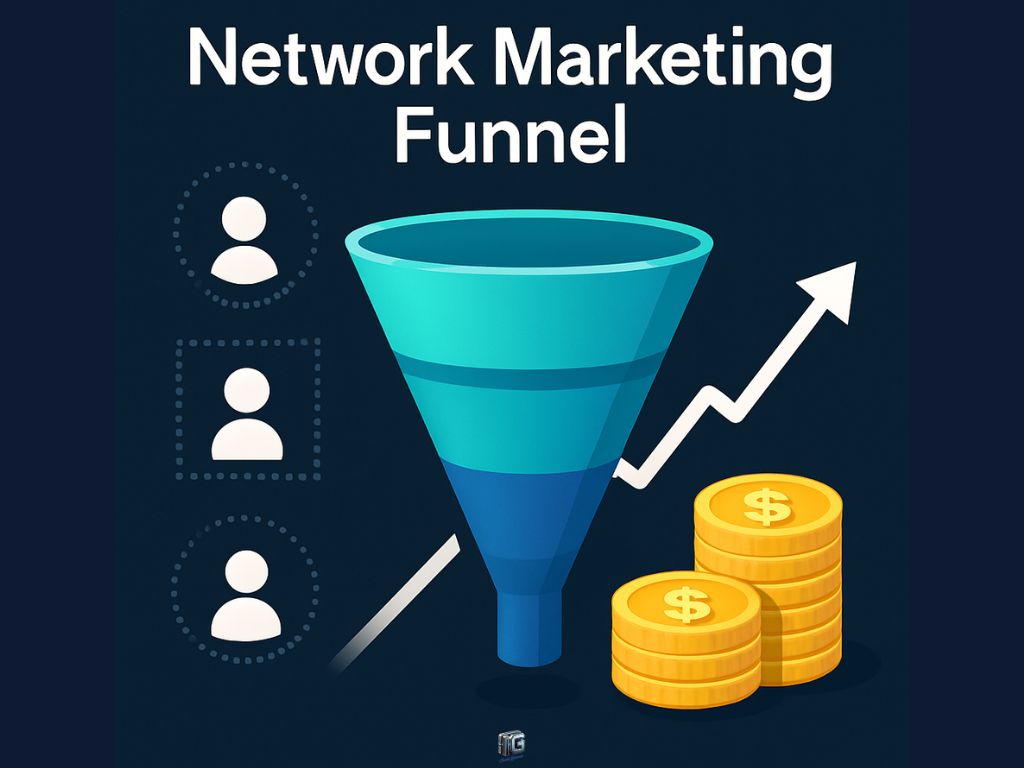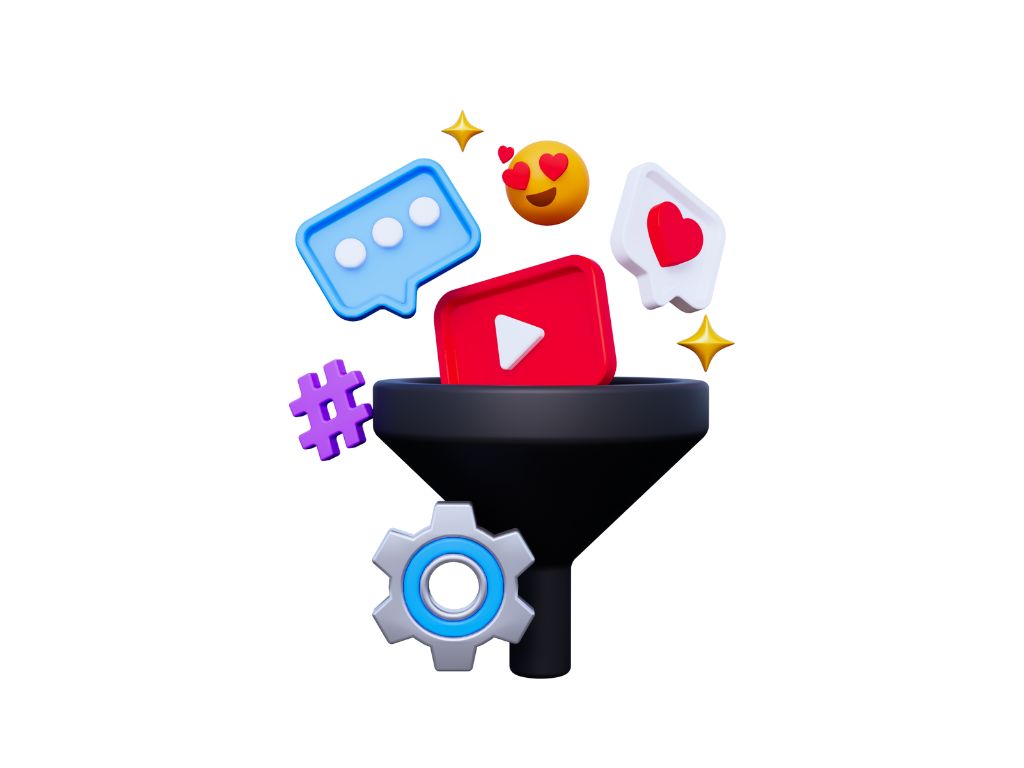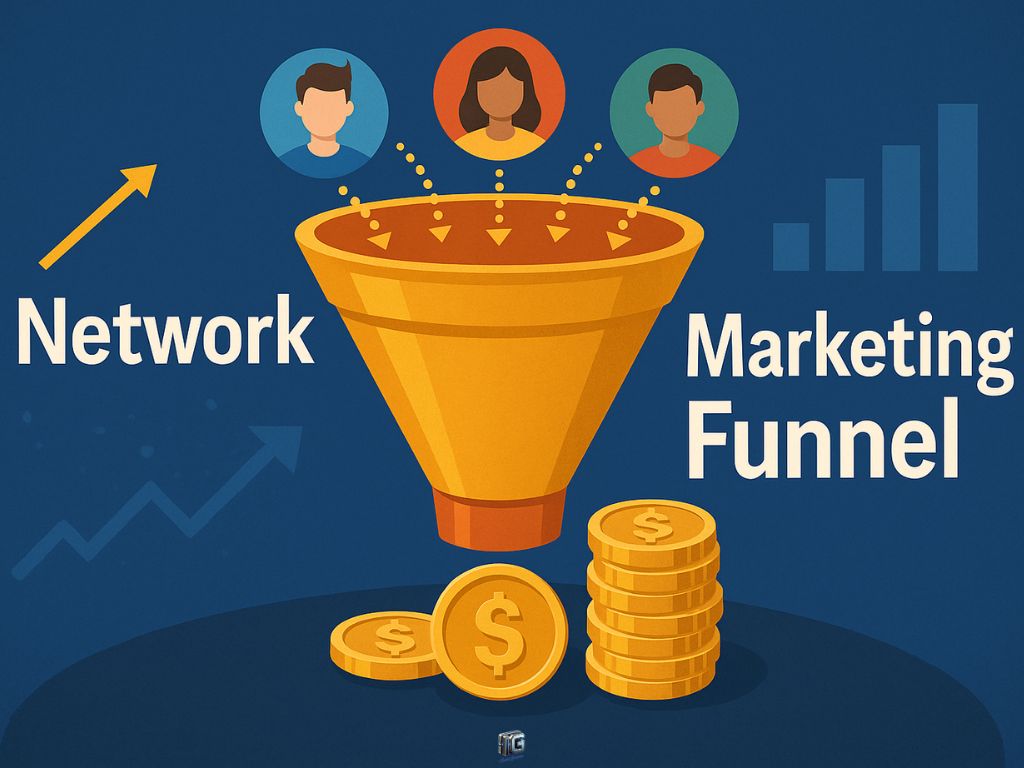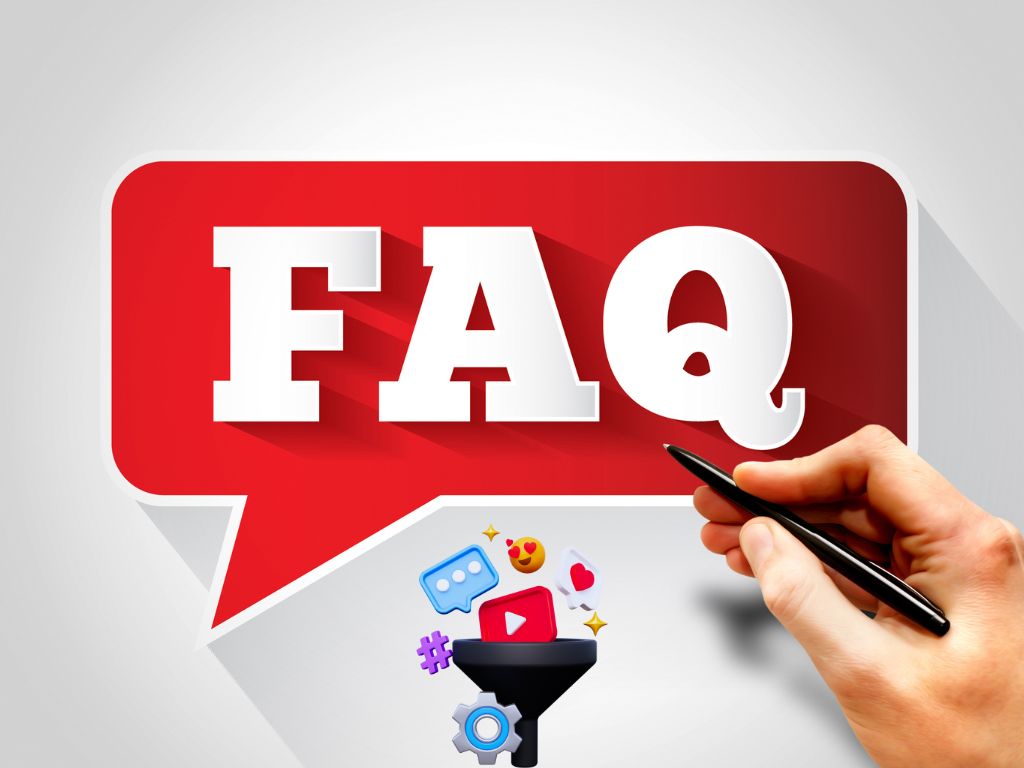Introduction: What Is a Network Marketing Funnel?
A network marketing funnel is a simple, automated system that helps you attract the right leads, build trust, and convert interest into action without cold messaging or chasing anyone.
Instead of manually reaching out to friends, strangers, or social media followers, a funnel brings qualified prospects to you. It guides them through a clear path: from discovering what you offer to taking the next step, whether that’s joining your team or buying your product.
In 2025, this isn’t just a nice-to-have. It’s the new standard for anyone serious about building a sustainable network marketing business online.
In this guide, you’ll learn exactly how a network marketing funnel works, why it outperforms outdated methods, and how to build one from scratch even if you’ve never set up a landing page before.
Key Takeaways
- A network marketing funnel replaces cold outreach with a simple, step-by-step system that attracts and qualifies leads automatically.
- Funnels guide prospects from first contact to decision, making your business scalable, consistent, and far less time-consuming.
- You’ll learn how each stage of the funnel works: Attract, Capture, Nurture, Present, and Convert.
- This guide shows you real examples, recommended tools, common mistakes to avoid, and how to launch your first funnel without tech overwhelm.
Disclaimer: I am an independent Affiliate. The opinions expressed here are my own and are not official statements. If you follow a link and make a purchase, I may earn a commission.

Why Funnels Are Replacing Cold Messaging in Network Marketing
Traditional network marketing methods like sending cold DMs, pitching in comment sections, or working through a list of friends and family are not just outdated. They’re ineffective.
Prospects today are more informed, more skeptical, and less responsive to unsolicited outreach. Cold messaging feels intrusive, and even when it does get attention, it rarely builds trust.
Funnels solve this by shifting the entire process.
Instead of pushing your message onto people, a network marketing funnel pulls the right people in. It gives them control. They choose to click, opt in, and engage which means they’re already more interested and more likely to take action.
Here’s the difference:
- Cold messaging is unpredictable. Funnels create consistent flow.
- Cold messaging burns out reps. Funnels scale without extra effort.
- Cold messaging relies on pressure. Funnels build value and trust.
This shift isn’t a trend. It’s a necessary upgrade for anyone who wants to build a network marketing business that lasts.

Core Stages of a Network Marketing Funnel
A high-performing network marketing funnel isn’t just a set of pages or emails. It’s a structured system that turns strangers into loyal customers or team members by guiding them through a predictable, trust-building journey.
Each stage has one job: move the prospect forward. Nothing extra. Nothing wasted.
Here’s how the process works:
1. Attract
This is where attention begins. Your funnel starts before anyone lands on a page, it starts with your content.
Whether you’re posting a reel, writing a blog, running an ad, or offering a free tip on Instagram, the goal is to reach the right people with the right message. Not just traffic for traffic’s sake but qualified attention.
Think about what your ideal prospect is struggling with. Then create content that addresses it:
- “How I Found 10 Extra Hours a Week as a New Mom in Business”
- “3 Mistakes New Reps Make That Kill Their Confidence”
- “How to Grow a Team Without Bugging Friends or Family”
This stage is about value. Not visibility.
2. Capture
Once someone shows interest, give them a reason to take the next step and a simple way to do it.
This is where a lead magnet comes in. Offer something that solves a small, immediate problem in exchange for their name and email. It could be:
- A checklist
- A short guide
- A swipe file or script
- A mini-training
Make the promise clear. Make the delivery simple. And make sure what you offer aligns with what comes next in your funnel.
The goal here isn’t to close, it’s to connect.
3. Nurture
This is the trust-building phase. Most leads won’t convert immediately, but that doesn’t mean they’re not interested. They just need a reason to believe.
A nurture sequence (usually 3 to 5 emails) helps you:
- Share your story and values
- Educate them on the opportunity or product
- Address common objections
- Show them they’re not alone in their struggles
The tone here matters. Be real, helpful, and personal. Let them see you’re not just offering a pitch, you’re offering a path.
4. Present
Now that they know who you are and what you stand for, it’s time to make your offer.
This can happen in several ways:
- A webinar
- A recorded walkthrough
- A one-page offer breakdown
- A personal video invitation
The key here is alignment. Don’t surprise them with a pitch lead naturally into it by showing how your offer solves the exact problems you’ve been discussing.
Use proof. Use clarity. Use real outcomes. And always give them a clear reason to care.
5. Convert
This is where a good funnel becomes a great one.
At this point, the prospect is warmed up. They understand what’s being offered. Now it’s your job to make taking action easy.
That means:
- One clear call to action
- No clutter or distraction
- A smooth checkout or sign-up process
- Immediate confirmation and next steps
Bonus tip: a simple onboarding email or thank-you video can reduce buyer’s remorse and increase retention.
Your funnel doesn’t end at conversion, it transitions into a relationship.
When every stage works together, your funnel becomes more than a marketing system. It becomes a lead qualifier, a trust builder, and a scalable growth engine running in the background while you focus on real conversations.

Real Example: A Funnel in Action (Day-by-Day Flow)
To see how a network marketing funnel works in real life, let’s walk through what a typical week might look like after your funnel is live and running.
This will show how strangers become subscribers, how subscribers turn into warm leads, and how warm leads become team members or customers, all without manual chasing.
Day 1: Content Goes Live
You publish a short video titled, “How I Went from Burned Out to Booked Out Without Cold DMs.” In the video, you share 1–2 tips and offer a free resource: a downloadable guide called “The 5-Step Network Marketing Funnel Checklist.”
A clear call to action directs viewers to the link in your bio or post.
Day 2: Lead Captures Begin
People who resonate with the content click through to your opt-in page.
They enter their email in exchange for your lead magnet.
Your email automation tool immediately sends the free checklist, along with a warm, personal welcome message that introduces who you are and what they can expect from your emails.
Day 3–4: Nurture Sequence Begins
Now the lead is inside your funnel.
Over the next two days, they receive 1–2 emails that:
- Expand on the tips in the checklist
- Tell your story (including a turning point or struggle they can relate to)
- Tease the opportunity or product you’ll be sharing later
There’s no hard selling. Just value and connection.
Day 5: Presentation Email Sent
Once they’ve engaged with your first few emails, it’s time to make your offer.
You send a message that links to a short video presentation: “Here’s the system I used to sign up 15 reps in 30 days without cold outreach.”
The video is clear, benefits-focused, and designed to show that this is a real solution to a real problem.
Day 6–7: Follow-Up and Conversion
After the presentation, a final email goes out with a simple question or prompt: “Are you ready to build this system with me?”
This email includes a direct call-to-action to book a call, sign up, or join your team.
The funnel closes the loop, but you’re there to follow up with any personal touch points if needed.
The power of this funnel isn’t just automation, it’s leverage.
While you’re working, resting, or spending time with your family, your funnel is:
- Attracting leads
- Delivering value
- Building trust
- Presenting your offer
- Qualifying who’s truly interested
No guesswork. No burnout. Just a repeatable system that works for you, every day.

Best Tools to Build a Funnel Without Overwhelm
You don’t need expensive software or complex tech to create a powerful network marketing funnel. In fact, the most effective funnels are often the simplest built with tools that let you focus on strategy, not setup.
Here are the essential categories and beginner-friendly options that get the job done:
1. Funnel Builders
These tools help you create your landing pages, opt-in forms, thank-you pages, and presentation pages all without coding.
Recommended Platforms:
- ClickFunnels – Known for ease of use, built-in templates, and a strong community. Ideal if you want fast deployment and a guided experience.
- Systeme.io – An all-in-one, budget-friendly platform that includes funnel building, email automation, and course hosting. Great for new marketers.
- Leadpages – Focused on high-converting landing pages with simple drag-and-drop functionality. Quick setup with proven design patterns.
2. Email Automation Tools
Once a lead enters your funnel, your email tool delivers your lead magnet and begins the nurture sequence automatically.
Recommended Platforms:
- ConvertKit – Built for creators and personal brands. Visual automations, simple tagging, and strong deliverability.
- MailerLite – Clean interface, affordable plans, and everything you need for basic automations.
- Mailchimp – Well-known, beginner-friendly, and includes free plans to get started quickly.
3. Automation + Tracking Tools
These tools connect your funnel pieces and help you monitor performance over time.
Recommended Tools:
- Zapier – Automates repetitive tasks by connecting your apps (e.g., automatically add new leads to your email list).
- Google Analytics – Tracks where your leads are coming from and how they’re interacting with your pages.
- Built-in Analytics – Most funnel and email tools include basic data on opt-ins, email opens, and clicks.
Start simple. Choose one tool from each category.
Your goal isn’t to build the most advanced system, it’s to launch something clean, functional, and aligned with your audience.
Once it’s live, you can optimize and expand. But the first version should do one thing well: turn attention into action.
For more tools read our CRM for Network Marketing Guide.

Common Funnel Mistakes to Avoid
Even with the right tools and structure, a network marketing funnel can underperform if a few critical mistakes slip in. These aren’t just technical errors, they’re often the reason leads stall, drop off, or never convert.
Avoiding these common issues will give your funnel the best chance to run smoothly and deliver results.
1. Pitching Too Soon
The fastest way to lose a lead is to sell before you’ve earned trust. If your funnel pushes the offer immediately after someone opts in, it short-circuits the relationship.
Fix: Let your nurture sequence do the groundwork. Focus on value, education, and story first then present your offer when interest has already been built.
2. Overcomplicating the Funnel
Many marketers add too many pages, choices, or steps. This creates confusion, not clarity and confused leads rarely convert.
Fix: Keep your funnel simple. One offer, one call to action, one clear outcome. Use a clean layout, strong headlines, and minimal distractions.
3. Neglecting Follow-Up
Not everyone converts the first time they see your offer and that’s normal. But failing to follow up means you’re missing out on warm leads who just need more time or clarity.
Fix: Use an automated email sequence (3 to 5 emails minimum) that educates, answers objections, and reinforces the value of your offer.
4. Ignoring Mobile Experience
Most people will visit your funnel on their phones. If your pages aren’t mobile-optimized, buttons don’t load, or text is hard to read, you’ll lose leads instantly.
Fix: Test every funnel page on a mobile device. Prioritize fast loading, readable text, and easy navigation.
5. Failing to Track Performance
Without clear data, you’re guessing. You won’t know where leads drop off or which part of your funnel is converting which means you can’t improve it.
Fix: Track the basics:
- Landing page conversion rate
- Email open and click-through rates
- Funnel completion and signup rate
Use that data to make smart adjustments over time.
The goal isn’t to be perfect, it’s to stay focused, consistent, and strategic.
When you avoid these mistakes, your funnel becomes more than a lead capture tool. It becomes a trust-building system that grows with your business.

Conclusion: Build a System, Not Just a Hustle
If you’re serious about growing a network marketing business in 2025, relying on old tactics won’t cut it. Cold messages, random outreach, and chasing uninterested people drain your time and your motivation.
A network marketing funnel changes that.
It gives you structure, it creates consistency. It attracts the right people and filters out the rest, automatically.
You don’t need to be a tech expert. You don’t need a big budget. You just need the right foundation: a simple funnel that captures attention, delivers value, and moves leads to action.
Start with one funnel. One offer. One message. Then let the system do its work while you focus on building real relationships with the people who actually want what you offer.
Next step: Pick your funnel builder, create your lead magnet, and publish your first opt-in page. Your funnel doesn’t just help you grow. It helps you grow without burning out.
Check out our Network Marketing Guide and the Top Network Marketing Companies Guide.

FAQs: Network Marketing Funnels
These are the most common questions new and experienced marketers ask when building a network marketing funnel. Each answer is designed to remove confusion and help you take action with confidence.
Do I need a website to build a funnel?
No. Funnel builders like ClickFunnels, Systeme.io, and Leadpages let you create standalone opt-in pages, thank-you pages, and presentation pages, all without needing a full website or domain.
Can I use a funnel for both recruiting and product sales?
Yes. You can either create a single funnel with branching offers, or set up separate funnels for each goal. Just be clear on your objective before building, clarity makes conversion easier.
How much does it cost to get started?
Many funnel and email platforms offer free trials or starter plans. You can launch your first funnel for as little as $0 to $30 per month depending on your tool stack. Start lean, then scale as needed.
What’s the best lead magnet for network marketing?
The best lead magnets solve a small, specific problem your ideal prospect cares about. Examples:
- A checklist for starting a business from home
- A script to invite prospects without sounding pushy
- A short video training on how to grow with less burnout
How long does it take to see results?
Some people see leads and signups in the first week. Others take longer depending on their traffic and messaging. The key is consistency: drive traffic, optimize your message, and let the funnel do its job.
What’s the difference between a funnel and a landing page?
A landing page is just one part, usually where you collect an email. A funnel includes the full process: opt-in, follow-up emails, presentation, and conversion. Think of the funnel as the whole system, not just one page.
Can I automate everything?
Almost everything, yes. You can automate your opt-in delivery, email follow-up, and even sales presentations. What you shouldn’t automate is personal connection, reply to real questions, stay human, and keep relationships at the center.
1 Comment
Network Marketing: How It Works and Why It’s Controversial - Ismel Guerrero. · June 2, 2025 at 9:14 pm
[…] Next: Check out the Network Marketing Funnel Guide. […]